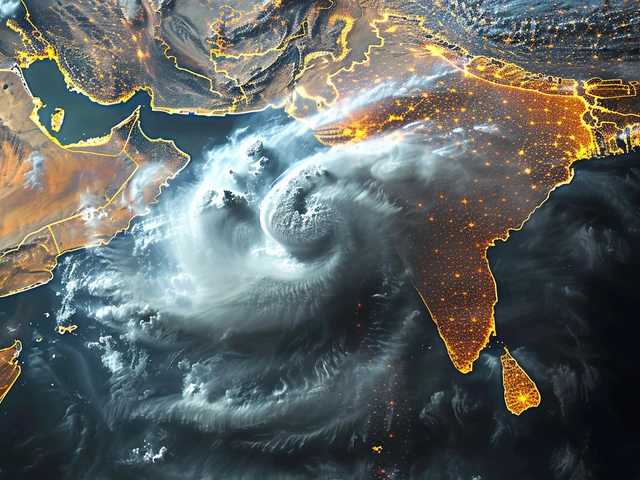Emergency Measures Enacted on Kenya's Coasts Ahead of Cyclone Hidaya
In a swift and preventative move to safeguard lives and minimize damage, Kenya's Interior Secretary, Kithure Kindiki, announced stringent restrictions against beach activities along the nation's coastlines. This decision is prompted by the imminent Cyclone Hidaya, which is projected to unleash considerable climatic disturbances across the coastal counties of Kwale, Mombasa, Kilifi, and Lamu. The prohibition spans all forms of recreational and economic activities by the ocean, including fishing, swimming, and non-essential water transport.
The urgency of this ban was driven by the aggressive approach of Cyclone Hidaya, which recently achieved full cyclonic status. Early reports indicate it will result in heavy precipitation, characterized by high-velocity winds and formidable waves, causing potential upheaval in marine and coastal ecosystems. Authorities enforced these restrictions starting Saturday, May 4, 2024, demanding an immediate halt to all hazardous waterfront activities.
The cyclone, which has already made its presence felt on the Tanzanian coast, continues to be vigilantly monitored by meteorological experts. The Kenya Meteorological Department has already registered significant indicators of the cyclone's strength offshore, with wind speeds surging over 40 knots (20.6 m/s) and wave heights exceeding two meters. Such conditions pose severe risks, not only to maritime activities but also to coastal settlements and environments.
Residents in the affected areas are urged to remain vigilant by keeping abreast of updates provided by the Kenya Meteorological Department. These updates are crucial for preparing and responding effectively to the evolving weather patterns. The general advice circulating among community members is to adhere strictly to the guidelines issued by authorities and to prioritize safety by avoiding the shoreline until the conditions stabilize.
The forecast suggests a progressive intensification of rainfall from Sunday, May 5, with a peak expected between Monday, May 6, and Tuesday, May 7, 2024. This period is critical, and the coastal region is likely to experience the full brunt of Cyclone Hidaya during these days. The timeline provided by the authorities extends the shoreline restrictions up to midnight on Monday, May 6, post which the situation will be reassessed based on the cyclone's residual impact and further meteorological insights.
Precautions and Safety Measures During Cyclone Hidaya
With the coastal areas placed under severe watch, local governments and emergency services are ramping up efforts to mitigate the effects of Cyclone Hidaya. Essential services such as rescue operations, medical facilities, and emergency shelters are being prepared to handle any eventualities. The population is being educated about the steps to take in case the situation deteriorates significantly.
Communication channels remain open, and the dissemination of information is being handled through multiple platforms to ensure that all residents receive timely and accurate updates. The importance of community solidarity is emphasized, with calls for cooperation among residents to help secure vulnerable groups and provide assistance wherever needed.
Moreover, economic impacts are also a significant concern. The prohibition on beachside activities directly affects the livelihoods of many who depend on the sea for their daily income. Authorities are mindful of the economic strain the ban could cause and are exploring avenues for relief and support for affected communities during and after the cyclone's influence subsides.
In this difficult time, the resilience and preparedness of the Kenyan coastal communities will be pivotal in navigating the challenges posed by Cyclone Hidaya. The collaborative effort between government bodies, local agencies, and the citizenry is crucial to weathering this storm safely and effectively, minimizing its potential harm while ensuring that life and property are protected to the maximum extent possible.






Write a comment